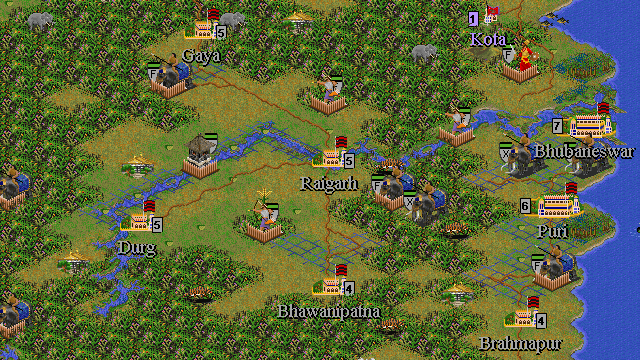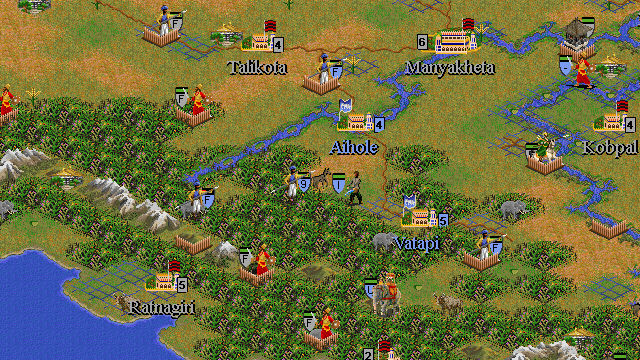Muslim Invasion of India
A scenario for Civilization II: Fantastic Worlds by Gabriele Quaglia.
Description
At the beginning of the second half of the 10th century, India was divided into many warring kingdoms. The three main empires, Gurjara-Pratihara, Rastrakuta and Pala, were dividing, as their feudatories gained more and more autonomy. By the beginning of the next century, Gurjara-Pratihara and Rastrakuta were becoming minor powers, prey of their very subjects, first of all the Rajput princes in Rajasthan, who were creating their own dominions.
Meanwhile, among the snowy peaks of Hindukush, a Turk slave revolt brought to power in Ghazni Tabuktigin, who led his force of raiders to the conquest a large Empire, mainly against the Abbasid caliphate. In 997, Mahmud, son of Tabuktigin, became chief after his father, and was able to obtain peace and the title of Sultan by the Caliph of Baghdad. Then he conquered Peshawar, gate to the Indus' vale, and began a long series of raids to India. For 17 years he plundered cities and temples, destroying holy statues and icons, and taking the treasures and offerings of the pilgrims, becoming an hero for all Muslim people.
The raids continued for decades, but the Indian princes were never able to unite to face the threat. Divided by bitter rivalries, the Princes lived conforming to the chivalrous ideals of their time: they were splendid and generous rulers, and bold and brave warriors, that make of war a game, and gave it rules.
The Turks were just the opposite: poor, ignorant, fierce and led only by the rule of the Jihad, the Holy War against infidels, they crushed the Indians with both bitter treachery and fierce fighting.
From 1191, Turkish policy towards India changed: the new Sultan, Muhammad of the new Ghor dynasty, led his armies, composed of Persians and Central Asian horsemen, to war. His aim, to submit India and spread the Prophet's Word. A new era of war began. After a first defeat, Muhammad was able to defeat and destroy his enemies, dividing them and trampling across the Ganges' valley. By 1206, the Sultanate of Delhi was founded. From this new Empire, the Muslims led a series of military campaign that, in the arch of several centuries, brought to the conquest of nearly all the Subcontinent, excluding the extreme South, the isle of Lanka, and the city of Udaipur in Rajasthan.
The wars were fought fiercely, and many heroic and cruel deeds were done, examples to the forthcoming generations, who would continue the war of their forefathers.
Screenshots
Downloads
Scenario Files (306 kB)

